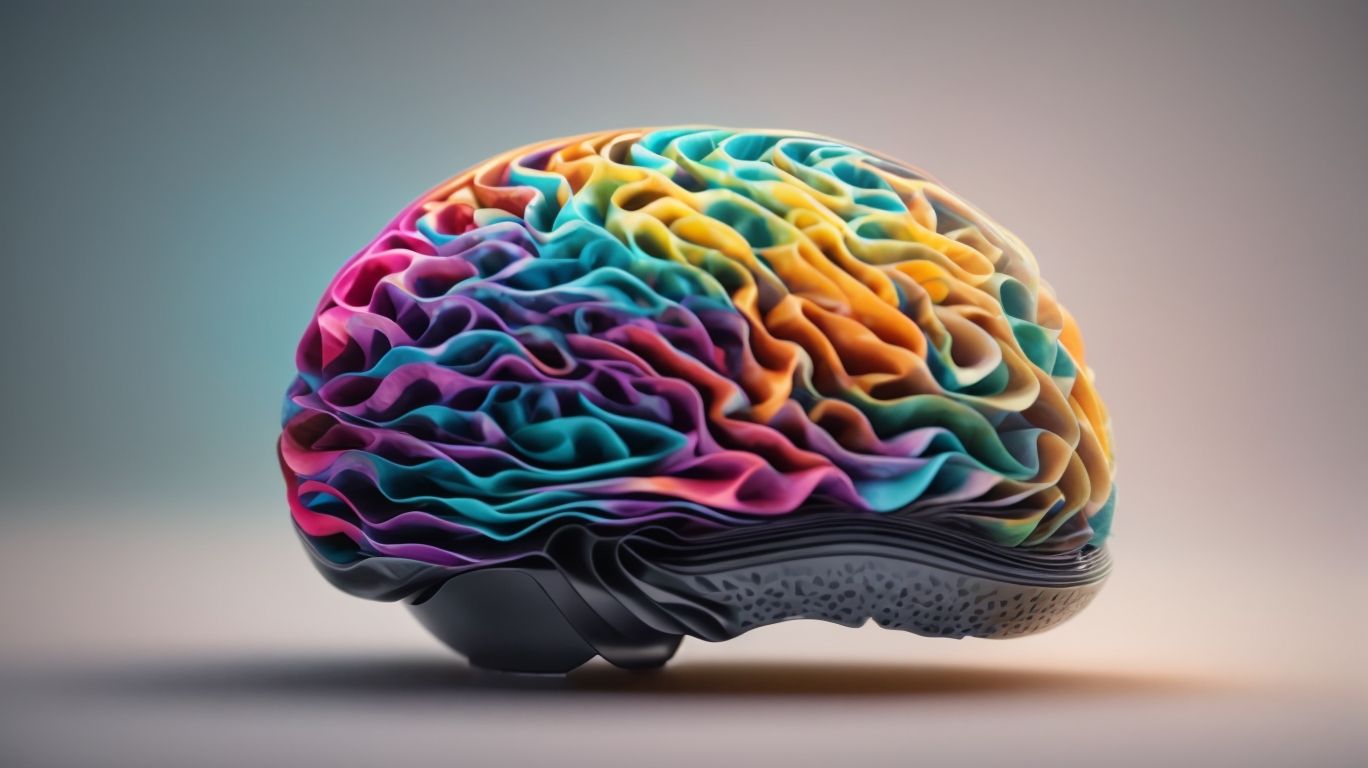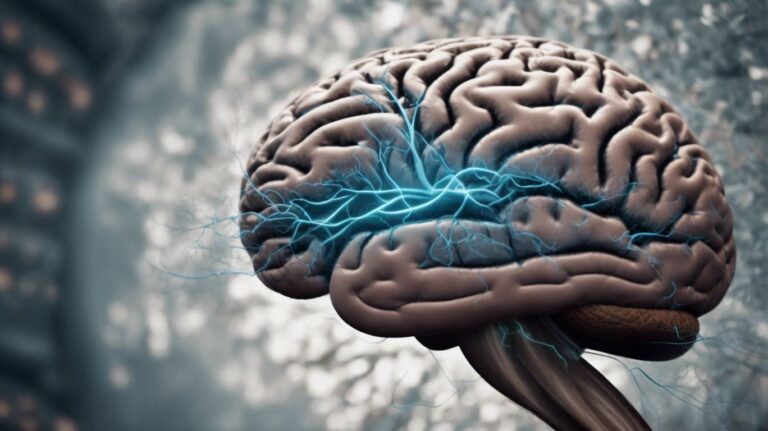Have you ever wondered what happens in your brain while you sleep? One fascinating aspect of sleep is the occurrence of sleep spindles. These unique brain waves play a crucial role in memory consolidation, learning, and problem-solving.
In this article, we will explore what sleep spindles are, their importance, how they are related to dreams, and how they can be improved. Join us as we delve into the world of sleep spindles from a psychological perspective.
Contents
- 1 What Are Sleep Spindles?
- 2 What Do Sleep Spindles Look Like?
- 3 What Causes Sleep Spindles?
- 4 What Are The Functions Of Sleep Spindles?
- 5 Are Sleep Spindles Related To Dreams?
- 6 How Are Sleep Spindles Measured?
- 7 What Are The Differences Between Sleep Spindles And K-Complexes?
- 8 What Are The Effects Of Sleep Spindles?
- 9 How Can Sleep Spindles Be Improved?
- 10 Frequently Asked Questions
- 10.1 What are sleep spindles?
- 10.2 How do sleep spindles impact our sleep?
- 10.3 Can sleep spindles be measured and tracked?
- 10.4 Are sleep spindles the same for everyone?
- 10.5 Can sleep spindles be affected by psychological factors?
- 10.6 How can understanding sleep spindles improve our overall well-being?
What Are Sleep Spindles?
Sleep spindles are sudden bursts of brain wave activity that occur during stage 2 of non-rapid eye movement (NREM) sleep.
Sleep spindles are characterized by their distinctive pattern, typically lasting 0.5 to 3 seconds, consisting of 12-14 Hz frequencies. They play a crucial role in memory consolidation and neural plasticity. These sleep spindles are more prominent in younger individuals and gradually decrease with age.
During a night’s sleep, sleep spindles tend to occur multiple times, with clusters of them appearing in cycles, mainly during the first half of the night when deep sleep stages predominate. The presence of sleep spindles is often associated with better cognitive function and overall sleep quality.
What Do Sleep Spindles Look Like?
Sleep spindles appear as distinctive wave patterns on an electroencephalogram (EEG) recording, characterized by short bursts of oscillatory activity.
These wave patterns typically arise during stage 2 of non-REM sleep and are associated with the synchronization of neuronal networks in the brain.
The frequency of sleep spindles can range between 11-16 Hz, with durations lasting around 0.5 to 2 seconds per spindle.
When observed on an EEG, these spindle-shaped waves often resemble a cotton-swab or a spindle on a spinning wheel, hence their name.
What Causes Sleep Spindles?
Sleep spindles are primarily generated by rhythmic activity in the thalamus, a key brain region involved in sensory processing and sleep regulation.
Thalamic neurons, particularly within the reticular nucleus, play a crucial role in orchestrating the oscillations characteristic of sleep spindles. These neurons receive inputs from various brain regions, including the cortex and brainstem, facilitating the coordination of neural synchronization essential for spindle formation.
The intricate interplay between the thalamus and the cerebral cortex is fundamental in regulating the transition between different sleep stages. Notably, the thalamocortical loop is integral in promoting the propagation of spindle activity across the cortical mantle, demonstrating the bidirectional communication between these two brain areas.
Brain Activity
Brain activity plays a crucial role in the generation and modulation of sleep spindles, with the thalamus acting as a central hub for coordinating these oscillatory patterns.
The thalamus, a key region in the brain, serves as a relay station for sensory information and is integral to the formation of sleep spindles. These spindle-shaped bursts of neural activity play a vital role in the transition between different stages of sleep, such as NREM and REM sleep cycles. Within the thalamic circuits,
GABAergic neurons
are involved in initiating and maintaining sleep spindles, regulating the excitability of thalamocortical networks. The release of
neurotransmitters like acetylcholine and serotonin
influences the generation and timing of these sleep-specific brain waves.
Sleep Stages
Sleep spindles are predominantly observed during stage 2 of non-rapid eye movement (NREM) sleep, distinguishing this stage from other sleep phases such as REM sleep.
These sleep spindles are characterized by bursts of oscillatory brain activity that last for around half a second, occurring in cycles throughout the night. As the body transitions through the various sleep stages, the presence of sleep spindles helps regulate the depth and quality of sleep. During NREM sleep, the brain consolidates memories, repairs tissues, and regulates hormones, all while spindles play a crucial role in ensuring these processes occur smoothly. As the night progresses, the proportion of time spent in REM sleep increases, signifying a shift towards more vivid dreams and heightened brain activity.
Age
The frequency and amplitude of sleep spindles vary with age, influenced by factors such as changes in melatonin secretion from the pineal gland.
Developmental changes play a crucial role in shaping sleep spindle characteristics as individuals transition from infancy to adolescence and adulthood. During childhood, there is a notable increase in the frequency of spindles, reflecting the maturation of the central nervous system. Hormonal influences, including fluctuations in estrogen and testosterone levels, contribute to the modulation of sleep patterns across different life stages.
Age-related variations in sleep architecture also impact spindle activity, with older adults often exhibiting reduced spindle density and duration compared to younger individuals. These alterations can be attributed to changes in neuronal connectivity and neurotransmitter regulation, highlighting the intricate interplay between aging processes and sleep physiology.
What Are The Functions Of Sleep Spindles?
Sleep spindles play a critical role in memory consolidation and learning processes, facilitating information transfer and integration during sleep.
Memory consolidation refers to the process of converting short-term memories into long-term memories, a crucial function for efficient learning and retaining information. During sleep, the brain replays newly learned information, allowing sleep spindles to strengthen connections between neurons and enhance synaptic plasticity. This process not only solidifies memories but also aids in filtering and organizing the vast amount of information gathered throughout the day, promoting cognitive efficiency.
Memory Consolidation
Sleep spindles contribute to memory consolidation by promoting neural replay and synchronization, a mechanism reinforced during REM rebound following periods of sleep deprivation.
These sleep spindles play a crucial role in the brain’s ability to process and store information efficiently. By enhancing the reactivation of specific neural circuits associated with memory retention, they help solidify newly acquired knowledge and skills. During REM sleep, the brain experiences a surge in spindle activity, leading to a heightened neural connectivity and integration of memories.
This phenomenon, known as REM rebound, is characterized by an increase in the time spent in REM sleep after a period of sleep deprivation. This consolidation process during REM rebound not only boosts memory retention but also fosters cognitive processes like creative problem-solving and emotional regulation.
Learning and Problem Solving
Sleep spindles enhance learning and problem-solving abilities by modulating neurotransmitter release, such as acetylcholine, which promotes neural plasticity and cognitive flexibility.
These sleep spindles play a crucial role in the process of synaptic remodeling, where connections between neurons are strengthened, facilitating better information retention and recall. This phenomenon is tied to the encoding of memories, a function in which acetylcholine is known to have a significant impact. By enhancing memory consolidation during sleep, acetylcholine assists in solidifying newly acquired information and integrating it into existing cognitive frameworks.
The modulation of neurotransmitters by sleep spindles enables efficient communication between brain regions, fostering cross-talk essential for various cognitive processes. The interaction between acetylcholine and other neurotransmitters creates a balanced environment that supports optimal learning, problem-solving, and decision-making abilities.
Protecting Sleep
Sleep spindles contribute to maintaining sleep quality by regulating inhibitory neurotransmitters like GABA and promoting the release of sleep-promoting hormones such as melatonin.
These sleep spindles, which are bursts of brain activity during non-REM sleep, play a crucial role in safeguarding the continuity and restorative qualities of our sleep. They help in coordinating the synchronized firing of neurons, particularly through the activation of GABAergic inhibition, which prevents the brain from being disrupted by external stimuli.
The role of GABA, the primary inhibitory neurotransmitter, is instrumental in calming the nervous system and maintaining a state of relaxation essential for deep, rejuvenating sleep. By enhancing GABAergic signaling, sleep spindles contribute to reducing arousals and disturbances during the sleep cycle, thereby ensuring a more consolidated and uninterrupted rest period.
Are Sleep Spindles Related To Dreams?
The relationship between sleep spindles and dreaming remains a topic of interest, with theories proposed by researchers like Sigmund Freud suggesting connections between spindles and dream content.
Dream experiences have long fascinated psychologists, leading to intriguing investigations into how sleep stages like spindles contribute to our nightly narratives. From a psychoanalytic viewpoint, dreams serve as a portal to the unconscious mind, where hidden desires and unresolved conflicts manifest in symbolic form during the REM stage. Neural studies further delve into the mechanics of dreaming, revealing the intricate brain activity patterns that give rise to vivid dream imagery, often blurring the lines between fantasy and reality.
How Are Sleep Spindles Measured?
Sleep spindles are commonly measured using electroencephalography (EEG) to capture brain wave patterns and functional magnetic resonance imaging (fMRI) to assess neural activity during sleep.
EEG is a non-invasive method that involves placing electrodes on the scalp to record electrical activity generated by the brain. These electrical signals are then analyzed to identify sleep spindles, which are brief bursts of brain activity that play a crucial role in memory consolidation.
On the other hand, fMRI utilizes powerful magnets to detect changes in blood flow and oxygen levels in the brain, providing insights into the underlying neural mechanisms associated with sleep spindles. By combining EEG and fMRI data, researchers can gain a comprehensive understanding of the dynamics of sleep and its impact on cognitive functions.
What Are The Differences Between Sleep Spindles And K-Complexes?
Sleep spindles and K-complexes represent distinct electroencephalographic patterns, with spindles characteristic of NREM sleep stage 2 and K-complexes associated with stage 2 and slow-wave sleep in NREM.
In terms of their EEG signatures, sleep spindles are identified as short bursts of brain activity, typically lasting around 0.5-3 seconds, while K-complexes are sharp waves followed by slower waves, occurring for about a minute.
Sleep spindles occur more frequently during the first half of the night, reflecting the transition from light to deeper sleep stages, whereas K-complexes tend to be more prevalent in the second half of the night, indicating a deeper level of sleep consolidation.
What Are The Effects Of Sleep Spindles?
Sleep spindles influence neurotransmitter release, such as serotonin and dopamine, impacting cognitive functions, mood regulation, and overall sleep quality.
The interaction of sleep spindles with neurotransmitter systems plays a crucial role in various aspects of brain health and functioning. For instance, serotonin is associated with mood balance, learning, and memory consolidation, while dopamine is known for its involvement in reward processing and motivation.
During sleep, these neurotransmitters work synergistically with sleep spindles to facilitate the transfer of information between different brain regions, contributing to memory formation and emotional processing. The modulation of neurotransmitter levels by sleep spindles also influences the synchronization of neural activity, which is essential for maintaining a healthy sleep-wake cycle.
Benefits Of Adequate Sleep Spindles
Adequate sleep spindles contribute to REM rebound, enhancing learning consolidation and cognitive performance during wakefulness.
During sleep, sleep spindles play a crucial role in transferring information from short-term to long-term memory, aiding in the retention of newly acquired knowledge. This process not only strengthens memory consolidation but also improves overall cognitive function by enhancing problem-solving skills and decision-making abilities.
A sufficient amount of sleep spindles has been linked to increased creativity and emotional stability, fostering a balanced mental state that facilitates effective learning and memory retrieval. By optimizing the quality and duration of sleep cycles, individuals can experience significant improvements in their cognitive resilience and adaptive capacity.
Negative Effects Of Insufficient Sleep Spindles
Insufficient sleep spindles can lead to elevated stress hormone levels like cortisol, disrupting neuroendocrine function and impairing memory retrieval processes.
When the body experiences a lack of sleep spindles, it struggles to regulate cortisol levels, which are crucial in managing stress responses. This dysregulation can create a ripple effect on various aspects of health, such as hormonal balance and emotional stability.
Without adequate sleep spindles, the brain’s ability to consolidate memories becomes compromised, affecting cognitive function and information retention. In essence, the intricate interplay between sleep, stress hormones, and memory processes underscores the importance of nurturing healthy sleep patterns to support overall well-being and neuroendocrine harmony.
How Can Sleep Spindles Be Improved?
Enhancing sleep spindles can be achieved through strategies that promote optimal melatonin secretion from the pineal gland and support serotonergic pathways associated with sleep regulation.
Integrating regular physical activity into one’s daily routine can significantly enhance sleep spindle activity. Engaging in activities like yoga or moderate aerobic exercise can positively impact melatonin production and serotonin levels, ultimately improving overall sleep quality. Establishing a consistent bedtime routine and creating a relaxing sleep environment can also aid in boosting sleep spindles.
Further, incorporating foods rich in tryptophan, such as turkey, milk, and nuts, can enhance melatonin synthesis and promote the production of serotonin, key neurotransmitters that influence sleep architecture. Avoiding stimulants like caffeine and maintaining a regular sleep schedule aligning with circadian rhythms can further optimize sleep spindle activity.
Frequently Asked Questions
What are sleep spindles?
Sleep spindles are brief bursts of brain activity that occur during non-REM sleep. They are characterized by rhythmic brain waves and typically last 1-2 seconds.
How do sleep spindles impact our sleep?
Sleep spindles play an important role in consolidating memories and promoting deep, restorative sleep. They are also linked to the regulation of emotions and stress levels.
Can sleep spindles be measured and tracked?
Yes, sleep spindles can be measured and tracked using an EEG (electroencephalogram) machine. This allows researchers to study the timing, duration, and frequency of sleep spindles in different individuals.
Are sleep spindles the same for everyone?
No, sleep spindles can vary in frequency and duration among individuals. Factors such as age, genetics, and sleep disorders can also impact the characteristics of sleep spindles.
Can sleep spindles be affected by psychological factors?
Yes, psychological factors such as stress and anxiety can impact the quality and quantity of sleep spindles. Certain medications or substances may also affect sleep spindle activity.
How can understanding sleep spindles improve our overall well-being?
By understanding the role of sleep spindles and how they can be influenced by psychological factors, we can make lifestyle adjustments to promote better sleep and overall well-being. This may include managing stress, creating a comfortable sleep environment, and practicing good sleep hygiene habits.



